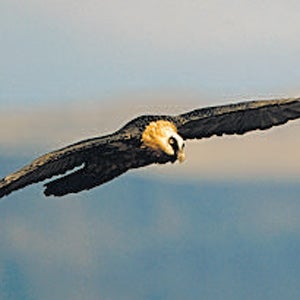Nature's way: up close with the flora and fauna

Your support helps us to tell the story
From reproductive rights to climate change to Big Tech, The Independent is on the ground when the story is developing. Whether it's investigating the financials of Elon Musk's pro-Trump PAC or producing our latest documentary, 'The A Word', which shines a light on the American women fighting for reproductive rights, we know how important it is to parse out the facts from the messaging.
At such a critical moment in US history, we need reporters on the ground. Your donation allows us to keep sending journalists to speak to both sides of the story.
The Independent is trusted by Americans across the entire political spectrum. And unlike many other quality news outlets, we choose not to lock Americans out of our reporting and analysis with paywalls. We believe quality journalism should be available to everyone, paid for by those who can afford it.
Your support makes all the difference.Birdwatching in Hautes-Pyrénées
The Pyrénées are home to hundreds of different types of bird. You can spot at least 22 species in the Pibeste Natural Reserve which has a dry microclimate, making it very attractive for nesting. The highlights are the birds of prey. The reserve is home to royal eagles, peregrine falcons, griffon vultures, Egyptian vultures and the golden eagle. However, the star of the bird-watching scene is the bearded vulture. There are just 29 pairs of these birds in the French Pyrénées and they are very difficult to spot.
Amongst other rare sights are the capercaillie, a grouse-like bird known for its dawn courtship displays in mid-May to early June, and the ptarmigan, whose feathers turn white in the winter to camouflage them in the snow.
Other ornithological treats are the dipper, a small, portly bird that dips in and out of natural water sources while looking for food on the riverbed. You can't escape the calls of several different kinds of woodpecker. Plus, if you are lucky, you might catch a glimpse of a wallcreeper. It's tricky to spot against the rock face, but keep your eyes peeled for a flash of crimson as it takes off.
Pibeste regional nature reserve (00 33 562 97 14 55; rnr-pibeste-saintpe.com); Borderline Holidays ( borderlinehols.com)
Transhumance in Aveyron, Ariège and Hautes-Pyrénées
In the summer months, the wild animals of the Midi-Pyrénées region have to make room for thousands of domesticated animals that ascend to the mountain pastures. The ancient custom of Transhumance is practised across the region. At the end of May, the process begins in the Aveyron, where herds of red cows are the first to be driven up onto the high plateau of Aubrac. Next, the goats of the Couserans area in Ariège make the climb into the mountains over three days at the beginning of June, accompanied by Mérens horses, which depart from all the valleys in Hautes-Pyrénées, Ariège and Haute-Garonne.
The process of moving to higher altitudes is celebrated at the Fête de La Transhumance. Farmers herding their animals up into the mountains are followed by locals dressed in traditional costume, as well as just about anyone else who wants to join in. There is often traditional music and local arts, and craftsmen give demonstrations. Festivities culminate in a communal meal of fresh local produce. Lamb cutlets, Bigourdan salads, local goat cheeses and blueberry tarts are among delicacies of the region that you can expect to sample.
Truffle hunting in the Lot
One of the most exciting culinary attractions of the Lot department of the Midi-Pyrénées region is the black truffle. These "black diamonds" are harvested in orchards across the department each year between mid-November and mid-March. The truffles typically grow beneath oak or hazel trees. Traditionally, the harvesters use sows to detect truffles beneath the soil. This is because the scent of a ripe truffle is similar to the sexual odour of the wild boar. The downside is that this scent drives the pigs into a sexual frenzy, and it can be as much work stopping them from eating the truffle as it is finding it in the first place.
At the weekly markets there are truffle-hunting demonstrations and the chance to view the array of truffles on sale. One of the biggest markets in the Lot department is at Lalbenque. Here, trading begins at 2.30pm, when the rope dividing the sellers and buyers comes down. Trading is very secretive, with bids scribbled on paper to avoid eavesdropping by other buyers. If you do not fancy forking out €300 a kilo, you can content yourself with being a spectator, and enjoy a truffle omelette while you watch.
A weekend (three days/two nights) looking for truffles costs from €145 per person (half-board). For more information, contact Midi-Pyrénées Vacances Loisirs (00 33 5 34 25 05 05)
Join our commenting forum
Join thought-provoking conversations, follow other Independent readers and see their replies
Comments